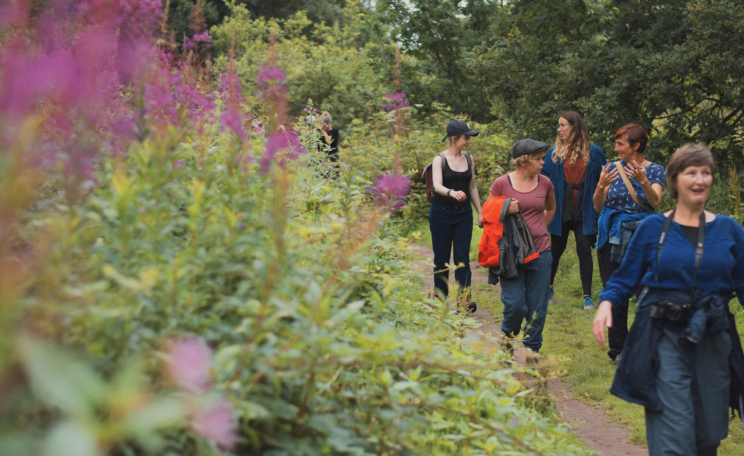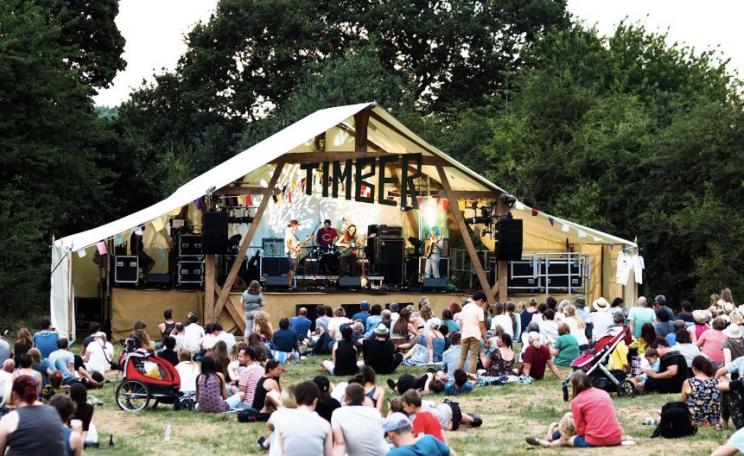What is the value of the environment? How do we measure it? And how do we make sure that we recognise those values in our decision making?
A recurring conversation at Timber Festival, either in the big tent, bars or campsite, has been how do we reverse the dramatic decline in wildlife and the loss and degradation of natural habitats.
We know that the global climate system is changing on an unprecedented scale. We have created a society which struggles to reconcile its impacts and dependencies on the natural environment.
To make a donation to support the next Timber festival, visit JustGiving.
Our inability to properly understand and account for the costs of our impacts, or the value the environment provides to us, has led to a systematic omission of the environment from our decision-making processes. The result is a short-term focus on immediate economic development at the expense of our long-term wellbeing. The impacts of such thinking are exemplified by the growing threat of catastrophic climate breakdown and a sixth mass extinction event.
Decisions
This is the bad news, but before you bury your heads in dystopian despair, we can avert this future. Both the Covid-19 pandemic and last year’s school strikes for climate action have demonstrated that collectively we can reimagine our world, and our voices and actions are often more powerful than we think.
We do, however, need to act swiftly and decisively. We need to adapt the system we have created to one which better understands, recognises, and values the role that the natural environment plays in supporting all of human existence. By doing so we can make better decisions which prioritise the protection and restoration of environmental processes – providing the support needed for human society to flourish now and into the future.
So where do we start? First, we need to recognise that this is an emergency. And an emergency needs immediate action to arrest the decline and repair the damage.
Second, we need to agree on a clear policy direction of where we need to get to. And third we need practical solutions that can deliver changes in how we act as a society.
It has been really promising to see the development of environmental policy in the UK over recent years. There is a growing cross-party recognition that we are living in an emergency situation and we need to act to get us out of it. The 25 Year Plan for the Environment in particular is a pioneering piece of policy which sets a clear target for us to leave the environment in a better state. What’s needed now is the third step - the practical solutions that can help to get us there.
What is the value of the environment? How do we measure it? And how do we make sure that we recognise those values in our decision making?
Value
Enter the idea of ‘natural capital’. Ecologist readers will be familiar with this term as it’s been critically appraised here a number of times before (e.g., Nature vs Natural Capital in 2016 and in relation to the Defra 25 Year Plan in 2018), so whilst the idea has been around for a while, it is now really starting to find its footing thanks to the work of organisations such as the Natural Capital Committee, Defra, and the Natural Capital Coalition.
The idea is a simple one, but with profound implications. It can be summarised like this - every aspect of the environment is an asset. Each area of woodland, stretch of river, or grassland meadow is an important resource which, if in good condition, provides a flow of services to society – such as cleaning the air, sequestering carbon, or providing opportunities for recreation.
These benefits can, and should, be valued. And they can, and should, be recognised in all aspects of our decision-making. From local authorities to the UK Government, and from family farms to big businesses – we need to start recognising the value of these natural assets and making sure that we manage them accordingly.
This seemingly simple idea then opens up a bigger, and much more complex set of questions. What is the value of the environment? How do we measure it? And how do we make sure that we recognise those values in our decision making?
We recognise that these are challenging and often controversial questions – but also that we shouldn’t shy away from taking them on. Even the authors of this article don’t always agree, but that shouldn’t stop us from talking, creating, and collectively finding solutions. Indeed, if we are going to tackle the emergency, it’s imperative for us to do so.
Laboratory
To help with this challenge (in a very small way!) the Lifescape Project and AECOM have set up the Natural Capital Laboratory (NCL)– a pioneering project that is bringing charities, businesses, and academic institutions together to collaboratively look into the questions of how we can better understand and recognise the value of the natural world.
The lab involves rewilding a piece of land in the Scottish Highlands to restore native forests, engage local communities, and reintroduce species that have been lost.
It also involves exploring the use of technology to collect data that can help to understand the environmental, economic, and social changes occurring on the site. This involves trialling the use of drones, satellites, AI, and robotic rovers to collect and analyse information.
The lab will be developing systematic ways to measure and value the benefits that occur each year – and undertaking research to better understand those values where there are gaps – such as covering our volunteers in sensors to monitor the impacts on their physical and mental wellbeing as they visit the site.
The lab will also be creating new ways of communicating the value of the environment – using approaches such as virtual reality, auralisation, and digital platforms to provide immersive ways of communicating those values to a whole range of different groups.
Vision
During lockdown we haven’t been able to visit the site, but we have had the chance to think about the future. Not just the immediate emergency we are living through, but what comes after that, when (hopefully) we have averted catastrophe.
What do we want the world to be like after the end of the 25 Year Plan? The world in which our children and grandchildren will grow up in.
At Lifescape, we envision a UK landscape where large areas of land are given over to restored wilderness with full trophic levels of wildlife. We envision a shift in conservation away from heavy human intervention in small spaces to arrest and manage decline, to bigger, better, more connected areas of natural space allowed to manage themselves under natural processes. And we envision markets and governments that provide the money and support needed to allow this to happen.
Our vision means connected areas of forest with missing species such as bison, elk, wolves, bears and lynx in order to restore ecosystem function, whilst also promoting co-existence and a flourishing human-centric economy which provides sustainable jobs and fair wages.
As well as opportunities for all aspects of society to experience the natural world for themselves. It may seem like a way off, but the decisions we make now can set the stage for the direction in which we travel. And being clear about the direction early on will allow us to take the necessary steps to get there. Come with us! If you’d like more information you can find us online, and we’ll see you at Timber in 2021, in the National Forest.
These Authors
Chris White is an Environmental Economist at AECOM and manages the NCL. Ian Convery is Professor of Environment and Society at the University of Cumbria and co-chairs the IUCN CEM Rewilding Thematic Group. Adam Eagle is the CEO of the Lifescape Project.
Andrew Weatherall works at the National School of Forestry, University of Cumbria. Jo Maker is the Timber Festival coordinator, The National Forest Company. They are together the guest editors of this Special Collection in The Ecologist. To make a donation to support the next Timber festival, visit JustGiving.
Image: Andrew Allcock.







